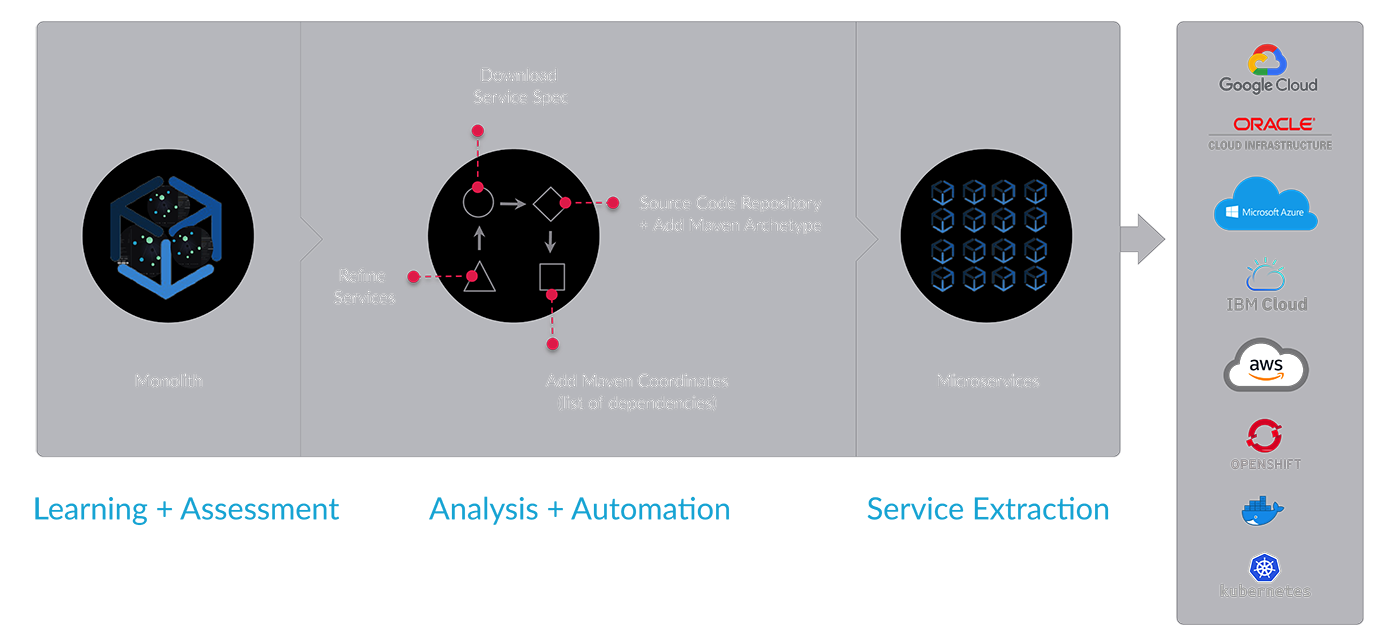vFunction Updates Aim To Accelerate App Modernization Process
vFunction continues to update its platform that can intelligently accelerate how enterprises can transform complex monolithic legacy Java apps into cloud-ready microservices. IDN speaks with Chief Ecosystem Officer Bob Quillin.
by Vance McCarthy
Tags: app modernization, automation, cloud-native, Java, technical debt, vFunction,

Chief Ecosystem Officer

"The most crucial step in app modernization is the first one - deciding to address the technical debt issue head on."
 Modern Application Development for Digital Business Success
Modern Application Development for Digital Business Success2022
With a focus on delivering a full-featured app modernization platform, vFunction is rolling out a new set of capabilities to help companies leverage their legacy assets for new cloud-native architectures.
This fall, the company announced a new vFunction Application Transformation Engine and updated its vFunction Modernization Platform. The additions will allow enterprises to automatically assess, analyze, and manage a “full modernization and migration process,” according to company execs.
vFunction offers a platform for developers and architects that can intelligently and automatically transform complex monolithic Java apps into microservices to avoid delays and errors in modernization projects, vFunction Chief Ecosystem Officer Bob Quillin told IDN. To do this, vFunction delivers a scalable, repeatable factory model purpose-built for cloud native modernization, he added.
Quillin noted that one distinguishing factor in vFunction’s approach to app modernization is a data discovery method. This allows companies to get a deep view of their monolithic apps and separate costly ‘technical debt’ from valuable legacy assets.
“At the highest level, vFunction defines technical debt as the historical complexity and risk enterprises carry forward in their legacy applications that in turn slows delivery and is a “boat anchor” to innovation. vFunction uses a data-driven approach to calculate the technical debt of a monolithic application,” Quillin told IDN.
Reducing technical debt requires pulling valuable legacy code/rules out of the monolith into a microservice or component that can be deployed, managed and changed independently - this minimizes complexity and risk-of-change going forward - and thus attacks technical debt head-on,” he added.
To drill into the company’s approach, vFunction help enterprises overcome tech debt when modernizing apps by measuring two critical metrics:
(1) the complexity of the application, which includes the level in which different sets of business logic are interrelated; and
(2) the risk level of the application, which translates to the likelihood that one change in an app can affect a seemingly unrelated part of the application.
vFunction latest updates offer new “application transformation” and assessment capabilities.

In specific, vFunction’s new Application Transformation Engine (vAXE) and expanded vFunction Modernization Platform (vMP) introduce these new capabilities:
Database Dependency Discovery & Analysis: The new vAXE analysis discovers, detects, and reports on which database tables are used by which services while decomposing a monolith with vFunction and optimizes service decomposition accordingly based on this information. This enables architects to extract microservices with minimal database interdependencies, as well as plan the modernization of the data layer.
Domain-Driven Observability: vFunction vAXE uses deep domain-driven observability via a passive JVM agent to accurately analyze flows, classes, usage, memory, and resources to detect and unearth critical business domain functions buried within a monolith. This dynamic analysis enables high degrees of scalability for even “megalith” - large monolithic - applications to untangle complex, old, and dense dependencies – even for applications of over 10 million lines of code and over 10,000 Java classes. The resulting decomposition enables unequaled acceleration, precision, and microservice decomposition results when synthesized with static byte code analysis.
Single Pane of Glass to Manage Broad Assessment, Migration, and Modernization: Unlike some traditional tools, the vFunction Modernization Platform provides a ‘single pane of glass’ that manages and tracks full cloud migration and modernization projects across an enterprise application estate. The expanded modernization dashboard manages, tracks, and coordinates the full migration and modernization process. This includes applications marked for Refactoring, Retention/Retirement, Replatforming, or Rewriting.
VFunction also sports broader integration and application support has been added to include older versions of Java, including Java 6, Alpine Linux, AIX, and more versions of Oracle WebLogic, IBM WebSphere, Red Hat JBoss, and Tomcat.
Through its platform approach, vFunction offers a scalable, repeatable factory model that allows architects and developers to manage and scale the full modernization and migration process from assessment to decomposition. In specific, vFunction takes a staged process, which includes discovery, assessment, analysis of transformation ‘next-steps’ and finally a set refactoring or equivalent techniques that implement changes, according to Quillin.
“The discovery and assessment phase is the first step, followed by the analysis, decomposition, and transformation of the monolith,” he said. “This can be done iteratively and selectively. In some cases, specific services from the monolith might move forward and the rest of the monolith may be retired or stay as-is. The final step in maturity is to adopt a continuous modernization strategy that attaches to modern CI/CD pipelines and prevents future technical debt from forming in the future.”
Quillin also shared with IDN some under-the-covers technical insight on how vFunction delivers this value to developers.
“vFunction analytics are actionable as they can specifically identify the Java classes that contribute the most to technical debt and then can actually decompose the application along these lines. How does a customer start? They can use vFunction data-driven assessments to measure, prioritize, then actively refactor and re-architect the applications identified,” he said.
Reviewing the full vFunction process, we asked Quillin in his opinion which step in app modernization is the most crucial.
“The most crucial step in app modernization is the first one - deciding to address the technical debt issue head on, and using a data-driven methodology that informs and guides the process with clear metrics on complexity, risk, and what to change,” he said.
“vFunction replaces qualitative or “seat-of-the-pants” assessment with actual architectural analytics - both dynamic and static analysis - that provides (1) intelligent guidance for assessment, and (2) a modernization platform that can then seamlessly take on the next phase of refactoring and decomposition,” Quillin added.
vFunction CEO and Co-founder Moti Rafalin also commented on modernization trends, how tech debt can get in the way of progress - and how vFunction is engineered to help.
“vFunction’s new capabilities represent a critical breakthrough in modernization, as development teams can now tap into data-driven assessments and get a clear view of application complexity, functional domains, and dependencies. With these automated insights, enterprises avoid the time-consuming, manual modernization approaches that exist today and can finally tackle mounting technical debt head-on,” Rafalin said.
Related:
- Mirantis Lens Pro Looks to Simplify Kubernetes, Boost Developer Productivity
- SentinelOne Expands DataSet Technologies for Container, Cloud-Native Security
- 2021 Was Worst Year Ever for Ransomware; Two-Thirds of Victims Paid Ransom
- OutSystems, SAP Partnership Leverages Low-Code for Novel Solutions, Migration
- Orca Security's Attack Path Analysis Improves Protection for Cloud-Naïve Apps
All rights reserved © 2025 Enterprise Integration News, Inc.


